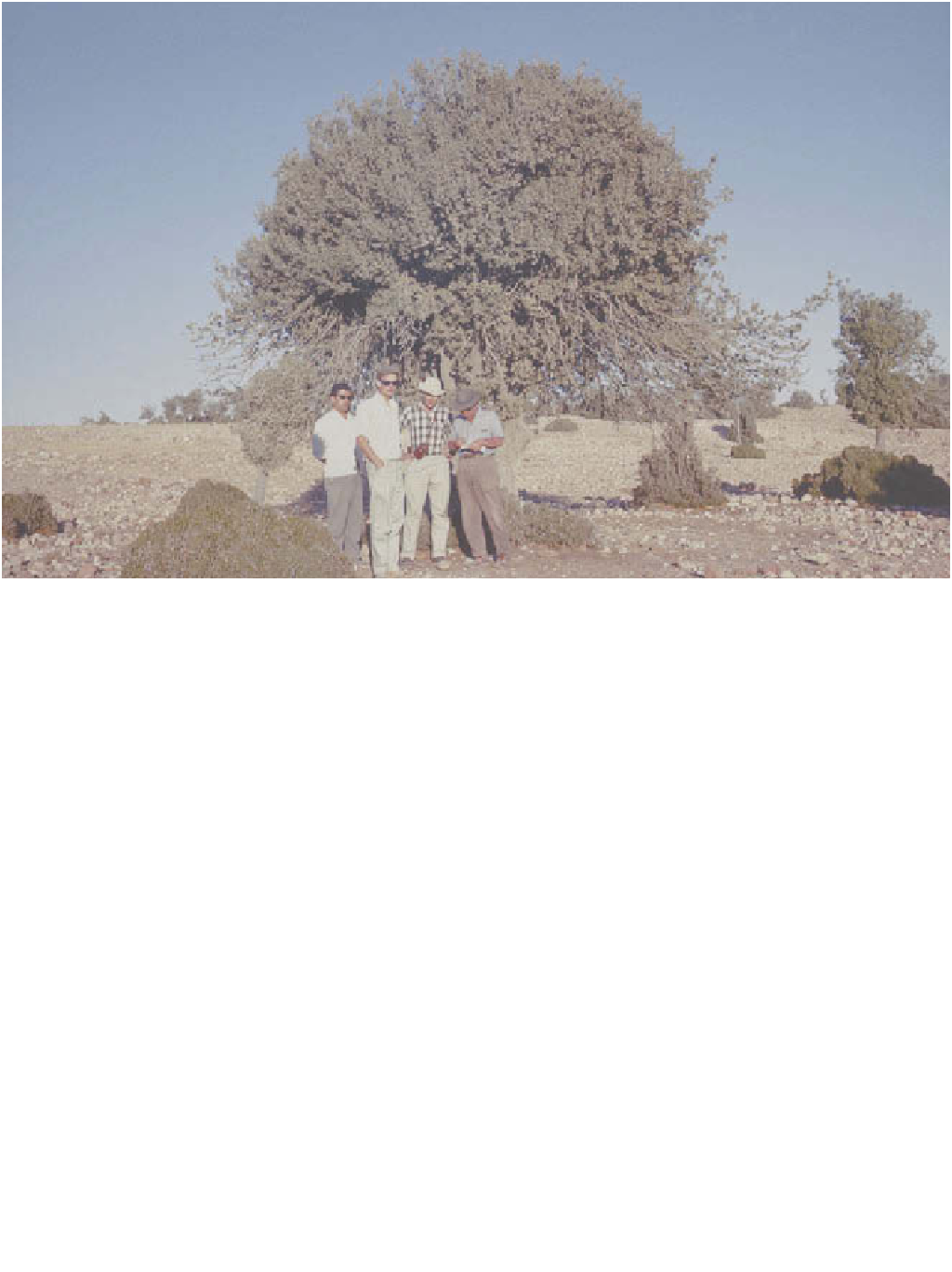Geoscience Reference
In-Depth Information
Plate 25.2
The remains of the 'Forest of Shobak' in southern Jordan, written about by Lawrence of Arabia. Trees were felled
to fuel the Ottoman Hejaz railway before and during World War I. This surviving Pistachio is heavily browsed, probably by camels,
Photo: Ken Atkinson
human impacts, and their relationships with both
degenerative and regenerative trends in vegetation, are
shown in
Figure 25.9
.
The climax vegetation is evergreen
oak woodland (holm oak,
Q. ilex
; cork oak,
Q. suber
)
which will degenerate into
maquis
scrub under light
exploitation.
Maquis
is typically 1-3 m high, and today is
more widespread than 'relict' evergreen forests. Many
plants that are present in the forest but which prefer more
open habitats grow abundantly in
maquis
(tree heath,
buckthorn, Kermes oak, strawberry tree, myrtle, juniper).
The net result is a dense, almost impenetrable shrub
community, with plant species varying in different parts
of the Mediterranean (
Plate 25.3
)
Excessive exploitation leads to the formation of a low
mixed heath,
garrigue
, which is a very diverse community
of low shrubs and flowers, typically less than 1 m high.
The community is colourful and aromatic, with species
varying according to local conditions. However, common
plants are rosemary, thyme, lavender, sage, broom and
rock rose. The common feature of many
garrigue
plants
is their unpalatability to grazing by sheep and goats on
account of their poisonous, thorny or 'oily' nature.
Prolonged degeneration can lead to the almost complete
disappearance of shrubs and the formation of steppe
grassland and stony pasture (
Plate 25.4
).
Such eroded,
rocky terrain supports only grasses (esparto), annuals
(clovers) and bulbs (asphodels, tulips).
Figure 26.9
also
indicates the pathways of regeneration should the human
impact cease, for example through the abandonment of
agricultural land. However, regeneration of
garrigue
to
maquis
and then forest is clearly a much slower process
than degeneration, as soil erosion will have reduced soil
depth, water-holding capacity and nutrient content.
Extreme degeneration can make regeneration impossible
(
Plate 25.5
).
A view of vegetation dynamics which differs from the
above has been advocated by Rackham, Grove and Moody
(e.g. Grove and Rackham 2001). They raise questions
about the use of terms such as 'potential climax' and
'degradation', and point out that there is often little
evidence that
maquis
,
garrigue
and steppe can be turned
from one into another. The fact that a hillside is treeless









































